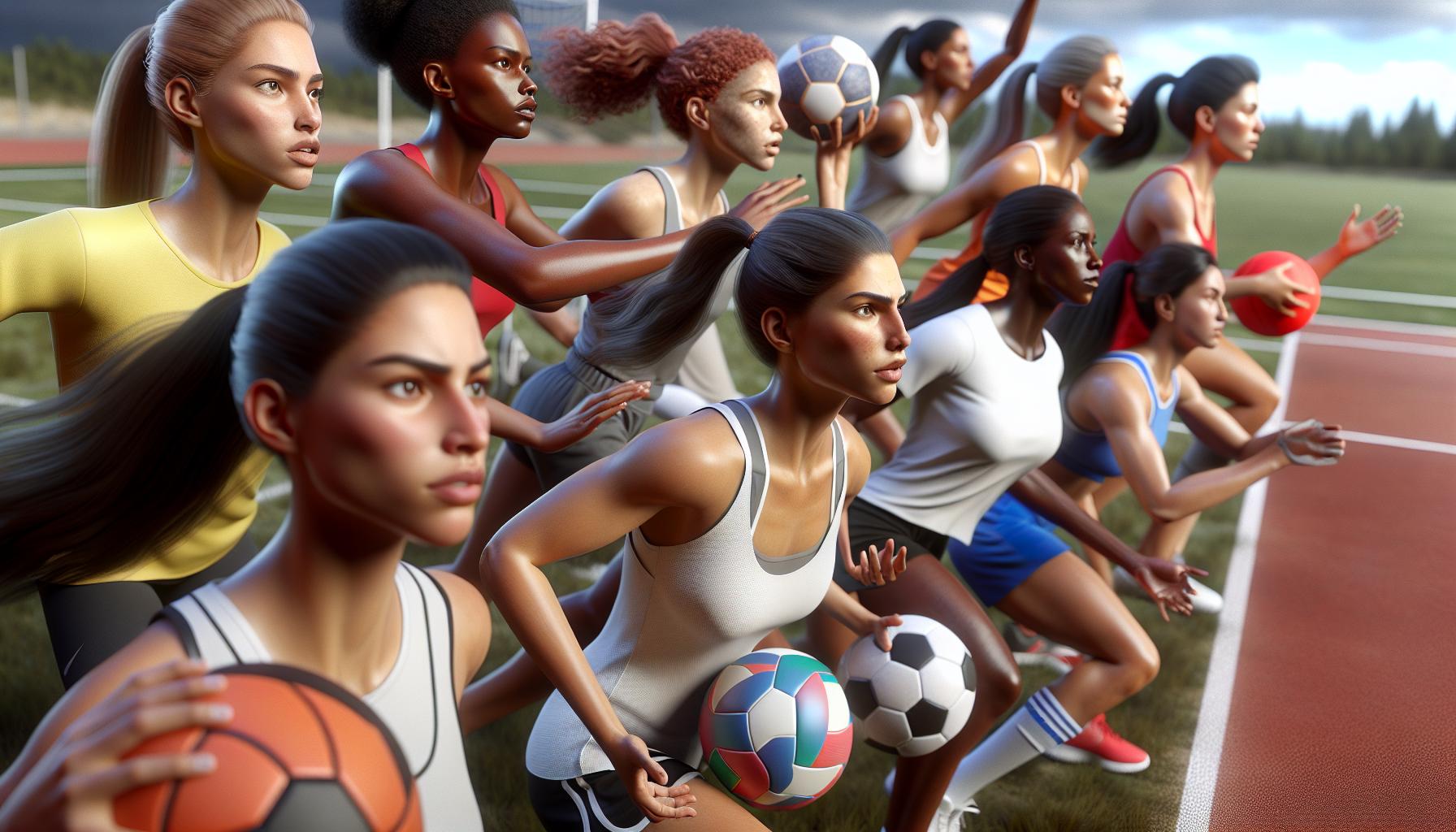In 2017, the sports world experienced a whirlwind of trends that had fans buzzing and athletes pushing their limits. From the rise of eSports taking center stage to the explosion of fitness wearables, it was a year where traditional boundaries blurred and innovation ruled the game. Who knew that tracking your steps could become as competitive as a championship match?
Sport Trends 2017
The sports industry saw significant shifts in 2017. eSports emerged as a dominant force, attracting millions of viewers and participants globally. Competitive gaming events drew major sponsorships, solidifying eSports’ status within mainstream sports.
Fitness wearables gained immense popularity, allowing individuals to track their performance with precision. Devices such as smartwatches and fitness trackers recorded data on steps, heart rates, and calories burned. These innovations turned casual activities into competitions, increasing engagement levels among participants.
Social media played a crucial role in amplifying these trends. Athletes and sports organizations utilized platforms for real-time interaction with fans, enhancing the overall sports experience. This engagement fostered community building and increased brand loyalty.
Youth involvement in sports also saw a notable rise, driven largely by increased access through technology. Online training programs and fitness apps made participation more appealing and accessible. The push for youth fitness further energized various sporting events.
Sustainability initiatives took center stage within the sports community. Organizations began to prioritize eco-friendly practices, encompassing everything from event management to product manufacturing. Fans welcomed investments in green technologies, creating positive perceptions around brands committed to sustainability.
Trends in sports continued adapting to a digital world. Virtual reality experiences allowed fans to engage with sports like never before. Immersive technologies transformed the way audiences interacted with their favorite athletic events, pushing the boundaries of traditional viewing experiences.
Major Sport Trends 2017

2017 marked significant transformations within the sports industry, driven by new technologies and changing societal attitudes.
Rise of E-Sports
E-sports achieved unprecedented popularity in 2017, capturing the attention of millions worldwide. Major tournaments drew in large audiences, with events like the International Dota 2 Championship offering multi-million dollar prize pools. Sponsorship deals from prominent companies validated e-sports as a legitimate force within mainstream sports. Significant investments rolled in from traditional sports entities looking to capitalize on this digital phenomenon. Streaming platforms like Twitch generated extensive viewer engagement, further solidifying e-sports’ status. Teams adopted training regimens similar to traditional sports, acknowledging the competitive nature of the discipline. Alongside entertainment, the rise of e-sports fostered a vibrant community, uniting fans and players across global platforms.
Growth of Women’s Sports
Women’s sports gained strong recognition and support in 2017, with increased media coverage enhancing visibility. High-profile events, such as the UEFA Women’s Euro, attracted significant viewership, showcasing the talent of female athletes. Sponsorship opportunities expanded rapidly, empowering organizations to invest in women’s leagues and tournaments. Fitness initiatives targeted female athletes, promoting inclusivity and encouraging participation at grassroots levels. Social media campaigns amplified female role models in sports, inspiring younger generations to engage in athletics. Additionally, women’s sports organizations focused on creating equitable conditions, advocating for equal pay and resources in various sports. Recognition of female athletes became a pivotal aspect of sports culture, further integrating them into the wider athletic narrative.
Technology’s Impact on Sports

Technology significantly transformed sport trends 2017, with advancements enhancing performance and engagement.
Wearable Technology Advancements
Wearable technology saw rapid innovations, allowing athletes to monitor heart rates, steps, and overall performance metrics. Devices like smartwatches and fitness trackers became essential for both amateurs and professionals. Individuals now turned casual fitness activities into competitive challenges, promoting a healthier lifestyle. For example, apps connected to wearables encouraged users to join competitions, increasing motivation levels. These advancements fostered a data-driven approach to training, enabling informed decisions regarding workouts and recovery strategies. Lastly, sports organizations utilized data collected from these devices to refine training regimens and improve athletes’ performance.
Social Media Influence
Social media played a critical role in 2017, shaping how fans interacted with sports and athletes. Platforms like Twitter, Facebook, and Instagram created direct connections between athletes and their followers. Real-time updates, behind-the-scenes content, and live interaction captivated audiences. Fans engaged with their favorite teams or athletes, fostering community engagement and loyalty. Moreover, social media campaigns amplified visibility for women’s sports, increasing opportunities for sponsorship. This interaction not only elevated athletes’ profiles but also contributed to growing audiences for various sports. Ultimately, social media became a powerful tool for brand building and fan engagement in the sports world.
Changes in Consumer Behavior

Changes in consumer behavior during 2017 significantly influenced the sports landscape. Increased health and fitness consciousness marked a shift in how individuals approached physical activity.
Health and Fitness Consciousness
Health awareness heightened as consumers prioritized well-being. Fitness wearables became indispensable tools, motivating individuals to monitor their progress. Smartwatches and fitness trackers empowered users to compete with friends, turning casual runs into comparable experiences. Users engaged in challenges, fostering a sense of community around these activities. Furthermore, sports organizations embraced this trend by offering programs that encouraged healthier lifestyles. The rise in competitive fitness significantly benefited both professional athletes and amateurs alike.
Viewing Habits of Sports Fans
Viewing habits of sports fans evolved due to digital advancements. Streaming platforms like Twitch emerged as popular venues for eSports, attracting large audiences. Fans now sought access to live events via smartphones and tablets, prioritizing convenience. The desire for real-time interaction encouraged social media engagement, where athletes and organizations connected directly with followers. The increase in personalized content drew viewers in, making sports consumption more dynamic. Online experiences further blurred the lines between traditional sports and digital platforms, reflecting a clear shift in how fans engaged with their favorite activities.
Future Trends
The sport trends 2017 reshaped the sports landscape in ways that continue to resonate today. eSports emerged as a legitimate contender in the sports arena while fitness wearables transformed how individuals engage with physical activity. The rise of women’s sports and the focus on inclusivity marked a significant cultural shift, further enhancing the diversity within athletics.
Technology played a pivotal role in these changes, enabling real-time interaction and fostering a sense of community among fans and athletes alike. As the lines between traditional sports and digital platforms blur, the future of sports looks more interconnected and dynamic than ever.

